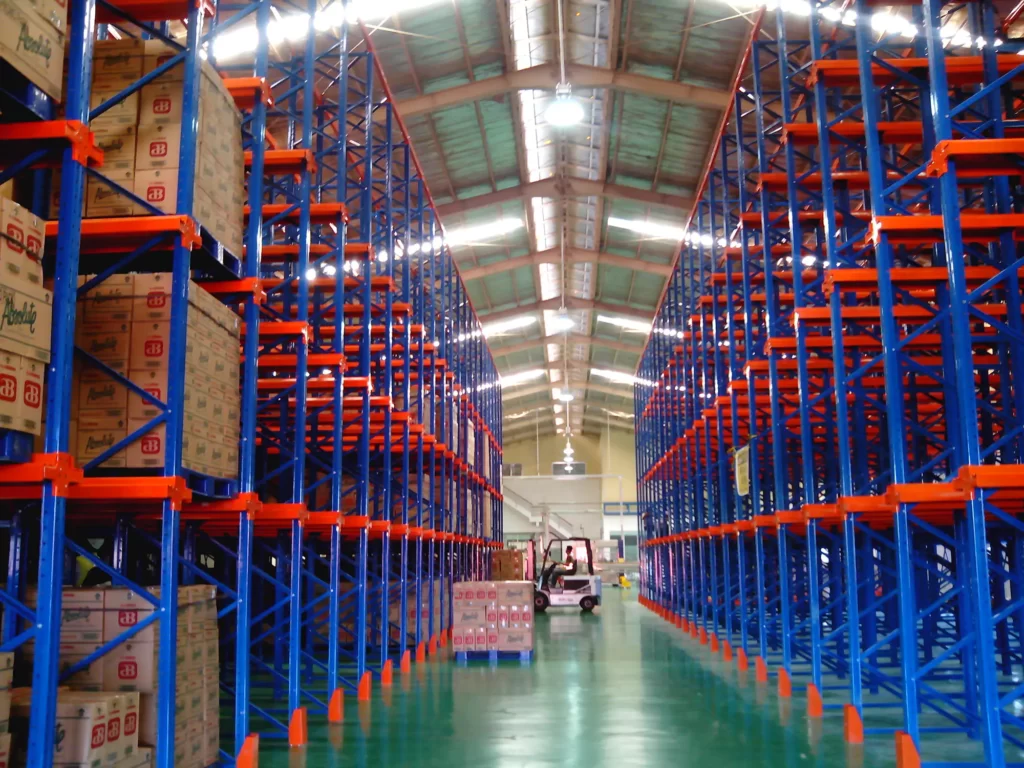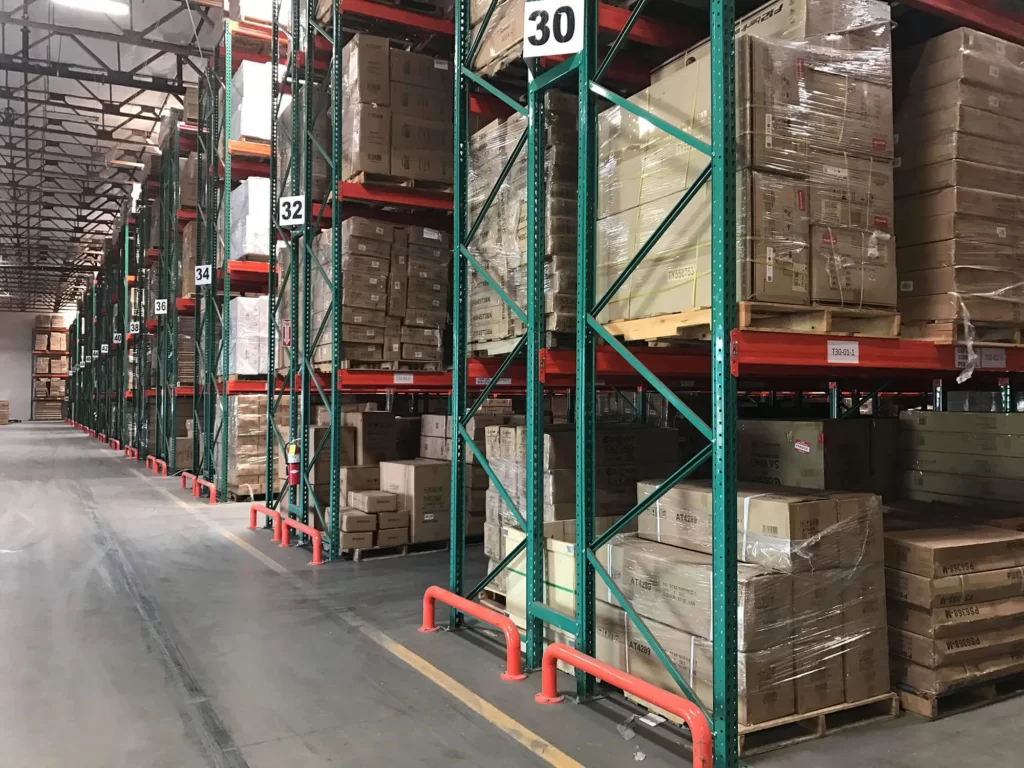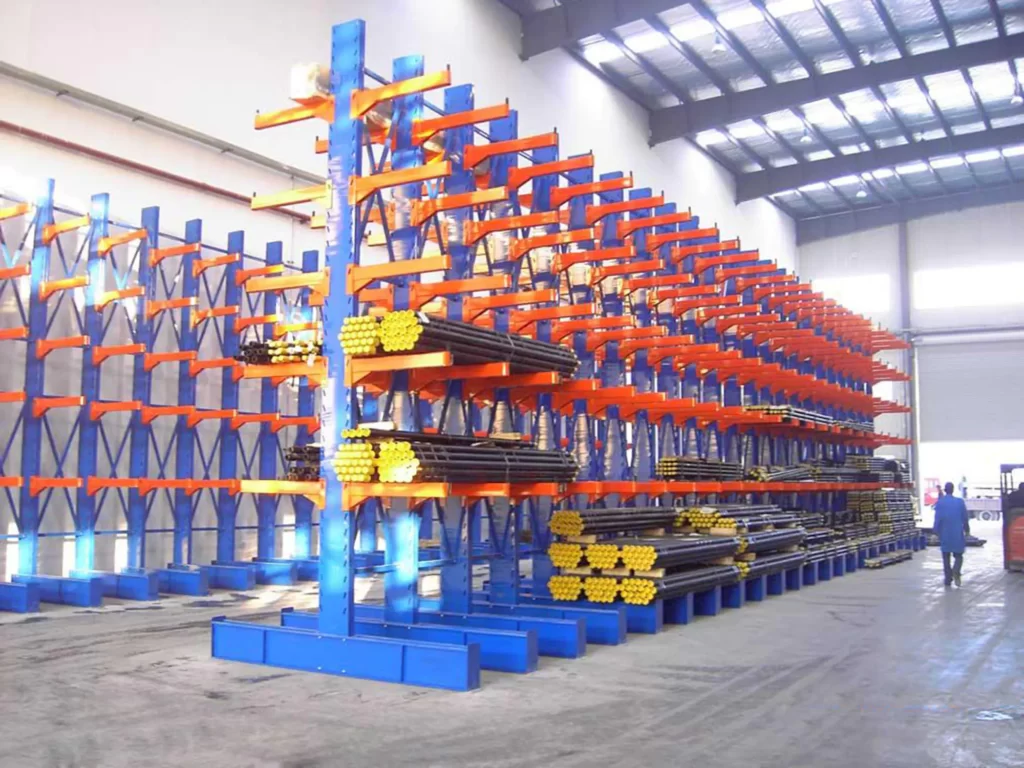Racking is an important tool for modernizing and improving the efficiency of warehouses and has an increasing share of market demand. As we all know, the height of the racks is several meters or even tens of meters high, and the correct standard use is directly related to the safe operation of the warehouse. In this article, we will take a look at the requirements for the standard use of storage racks.
Part 1 General requirements
1, should not use unaccepted storage racks.
2, the operating process should not exceed the maximum working conditions specified by the supplier, and the following safe working load data provided by the supplier should be implemented.
a) The load-bearing capacity of the suspended floor.
b) Maximum safe evenly distributed load per compartment.
c)Maximum safe load per meter length of rack.
d)Maximum safe force arm and rack loads and position of the center of gravity.
e) Maximum safe unit load.
3. When using forklift trucks or other mechanically operated equipment, the operational requirements are as follows.
a) It should be ensured that the quality and type of storage tools are appropriate to the warehouse racks.
b) Adequate training and instruction should be given to forklift operators and other operators before they start work.
c) Load information signs should be posted around storage racks to guide forklift operators and other operators in their work.
d) The weight of the unit of goods should not be greater than the load rating specified in the design of the storage racking.
e) The overall dimensions of the unit of goods should not be greater than the design dimensions of the warehouse rack layout and structure.
f) Forklifts operating on storage racks should have sufficient rigidity for their entire extended height and lifting weight.
g) The forklift truck aisle right-angle stacking width should not be greater than the design radius of the racking layout.
h) It should be ensured that there are no obstructions in the forklift operation aisle or area.
i) In the event of any accident or damage to the storage rack, the forklift operator or other operator should immediately report to their management.
4. Non-professional installers of warehouse storage racks should be prohibited from climbing the racks.
Part 2 Operation of warehouse storage racks
1、The operation process of conventional racks
a) The forklift truck is loaded with pallets and driven into the storage position of the pallet racking.
b) The driver opens the forklift truck and places the pallet horizontally into the compartment between the column pieces.
c) The driver considers the position of the pallet racking beam and places the pallet accurately into the racking at the appropriate depth (no contact with the beam until the pallet is lowered).
d) Carefully lower the pallet, place it on the beam and remove the load from the forklift. When the pallet is in contact with the beam, sliding or pulling of the pallet on the support members is prohibited.
e) The driver removes the forklift from the pallet and lowers it to the ground.
2、Change of warehouse racking
Changes to the storage racking include the following aspects.
a) Installation location.
b) Beam height.
c) Number of crossbeam levels.
d) Maximum unit load.
e) The way the load is placed and how it is loaded.
f) Connection form of components.
3、When the warehouse storage rack changes should be done as follows.
a) Changes to storage racking can cause safe load carrying capacity, the original supplier should be asked to assess and operate.
b) Storage racks should be unloaded during changes.
c) After all changes to the racking structure have been made, the safe load sign for the change should be replaced.
d) For warehouse storage racking fitted with back supports, when the position of the beams is changed, the position of the support nodes should be changed and the horizontal supports between the beams should be repositioned.
e) Unless approved by the storage rack designer, no additions or changes should be made to storage racks by welding or bolting.
4. Storage tools
a) shall be loaded in accordance with the rack supplier’s prescribed loading method and shall not exceed the maximum load specified by the supplier.
b) Shall be guaranteed to be in good working condition and of sufficient strength.
c) The size, type and tolerance should match the storage racking structure.
5. Placement of unit loads
(1) No more than the maximum unit load specified by the warehouse rack supplier should be placed.
(2) The stacking or pallet storage of goods should ensure that they will not fall.
(3) Storage racks should have warning signs showing important information such as their maximum load rating and loading method. Where there are several storage racks of different capacities in a storage area, the storage racks should be clearly and distinctly divided into areas showing their relevant maximum load ratings and loading methods.
(4) Unless already considered in the design of the storage racking, the actual size of the unit loads should not exceed the headroom required to ensure safe operation of the storage racking. (As shown tensioned, projecting and overhanging, all affect the type of pallet load for the load arrangement)
(5) The load arrangement should be determined according to the actual condition of the goods. It should be ensured that the load arrangement is consistent with the load arrangement at design load capacity. It is appropriate to refer to the loading method provided by the rack supplier.
(6) Loads should not be placed while standing on the rack.
(7) Forklift trucks should be driven carefully at all times to avoid collision damage to the racks.
(8) The specified unit load pallets should be placed on the storage racking support members in the correct orientation as specified. The pallet support is correctly oriented to the beam track.
(9) Pallets positioned on the supports shall be arranged symmetrically with a pair of pallet racking beams in the front and rear direction or with drive in racking beam rails in the left and right direction.
(10) When the lowest pallet support of the rack is on the floor, it is advisable to set a pallet placement guide line on each side of the aisle for positioning.
Part 3 Storage racks daily maintenance
1. Storage racks should be inspected on a daily basis, especially for damage that has occurred. If necessary, appropriate remedial measures should be taken in a timely manner, taking into account existing protective measures. All inspection data, findings and remedial measures taken should be logged. Storage racks should be regularly inspected by professional suppliers or by personnel with some experience and training.
2、Inspection content
(1) The main structure should be inspected for the following problems
a) Collision damage to any part of the structure.
b) Inclination of columns.
c) The working condition and effectiveness of shims, anchor bolts, locking devices, columns and column protectors.
d)Possible cracks in welds or parent material.
e)The condition of the building floor.
f)The position of the goods on the pallet.
g)The position of the pallet on the racking.
h)The condition and position of all load-bearing components.
(2) Safety precautions should be checked for
a) The setting and updating of load and information signs.
b) The absence of any storage position overloads.
c) Stability of the unit load.
d) The size of the unit load.
3、Inspection cycle
The inspection of storage racks should be carried out systematically on a routine basis and it is advisable to carry out the following methods.
a) Daily inspection. Daily inspections of storage racks are carried out by forklift truck drivers or other staff, and all safety problems and damage found should be reported to management.
b) Weekly or monthly inspections. A weekly or monthly inspection of the storage racks is carried out by the storage racking safety manager and a formal written report is submitted.
c) Regular specialist inspections. A specialist storage racking supplier or qualified technician should be called in periodically to carry out a professional inspection and submit a written report of the findings and necessary measures to the manager.
Part 4 Damage assessment
The severity of damage to columns, support elements and beams should be systematically assessed, classified and recorded by the user. The assessment should include an operational procedure for examining the problems identified by the assessment findings. Where it is not possible to eliminate the problems that exist or the likelihood of recurrence of damage, the procedure should establish appropriate measures to reduce that likelihood. Conclusions should be drawn based on an analysis of why the injury occurred, such as
a) Mishandling of the forklift truck.
b) Changes in the storage racks.
c)Inadequate skills of the driver and the need for training or retraining.
d)Type and quality of storage tools not meeting the requirements of use.
e)Uneven or overhanging unit load arrangement.
f)Pallet damage.
g)Design headroom too small.
h) Aisle widths too small.
i) Storage racks in poor working condition.
j) Overflow of goods leading to blockage of pallet aisles etc. Warehouse management is not in place.
The above is the answer to the question “storage racks can be used”, I hope it will help you.








